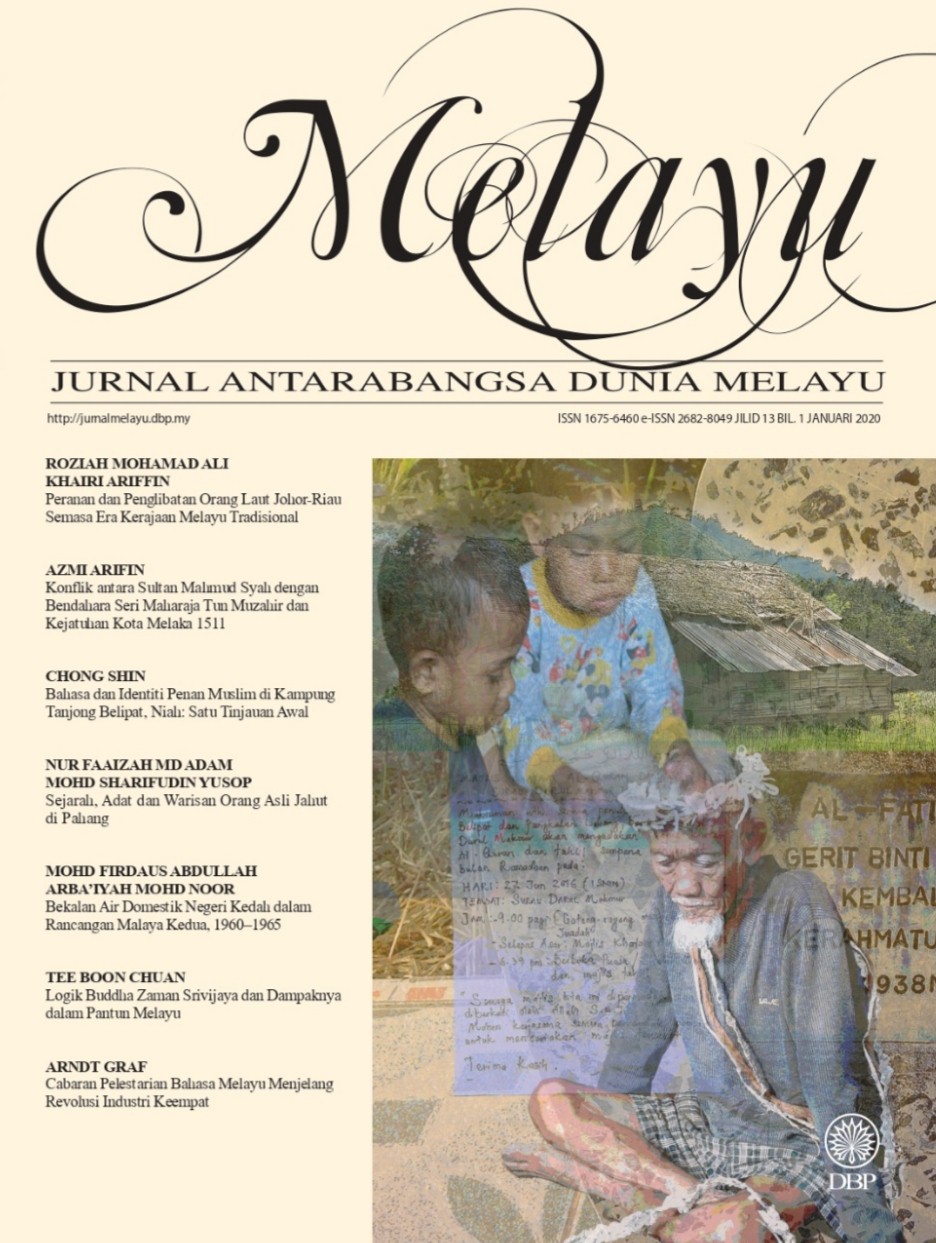Challenges for the Preservation of the Malay Language in the Imminence of the Fourth Industrial Revolution
(Cabaran Pelestarian Bahasa Melayu Menjelang Revolusi Industri Keempat)
Abstract
This article analyses the challenges in preserving the Malay language as we head into the Fourth Industrial Revolution. The discussion begins with the history of the concept of Industry 4.0, including the "Kondratiev waves", followed by a theoretical discussion about the relation between the major changes that will take place in technology, language, culture and politics. The emergence of Industry 4.0 has been promoted by the German government in response to their waning role in the global economy as a result of the rapid development of the Chinese economy, as well as that of other non-English-speaking or non-Anglosphere countries. The position of Malay and Bahasa Indonesia in Malaysia, Indonesia and Brunei is expected to remain an important one as long as the economic development of these three countries is maintained. The concept of Industry 4.0, that is, a combination of the "Internet of Things" with the "Internet of Services" provides much opportunity for users in Malaysia, Indonesia and Brunei to continue speaking Malay. The implications of this for the higher education system are to increase the employability of students in the era of Industry 4.0 in several ways, including: (1) enriching its scientific and technological terminology; (2) increasing the wealth of resources in Malay through publication of journal articles and books that suit the Industry 4.0 era; (3) teaching all subjects in colleges and universities in Malay. In other words, Malay it is imperative that Malay be made the language of Industry 4.0 discourse.
Keywords: Malay, Fourth Industrial Revolution, Malaysia - Indonesia - Brunei Darussalam, implications for the system of Higher Education
References
Anderson, Benedict. (1983). Imagined communities: reflections on the origin and spread of nationalism. London: Verso, 1983.
Kondratieff, Nikolai. (1926). "Die langen Wellen der Konjunktur", Archiv für Sozialwissenschaft und Sozialpolitik, Vol. 56, pp. 573-609.
Mamabolo, Roche. (2016). "4th Industrial Revolution: What it means for the creative arts", 13th October (https://rochemamabolo.wordpress.com/2016/10/13/4th-industrialrevolution-what-it-means-for-the-creative-arts/, diakses 10 hb Mei 2019).
Marr, Bernard. (2016). "Why Everyone Must Get Ready For the 4th Industrial Revolution", Forbes, April 7. (https://www.linkedin.com/pulse/why-everyone-must-get-ready-4thindustrial-revolution-bruce-w-hoy, diakses 10 hb Mei 2019).
Meudt, Tobias; Pohl, Malte; Metternich, Joachim. (2017). Modelle und Strategien zur Einführung des Computer Integrated Manufacturing (CIM) – Ein Literaturüberblick. Darmstadt: Technische Universität (http://tuprints.ulb.tu-darmstadt.de.proxy.ub.unifrankfurt.de/6653/1/20170609%20-%20V%C3%96%20-%20Literaturueberblick%20CIM.pdf).
Nazri, M. and M. Aiman Nazim. (2017). Top 10 Tech Trends that Malaysia Should Embrace: The EAC Perspective. Malaysian Business, 20-24.
Nefiodow, Leo A. (1991). Der fünfte Kondratieff. Wiesbaden: Gabler.
Nefiodow, Leo A. (1996). Der sechste Kondratieff. St. Augustin: Rhein-Sieg-Verlag.
Schumpeter, Joseph. (1939). Business Cycles. New York; London: McGraw Hill.
Thompson, William R. (Spring, 1992). Lawrence Vescera. Growth Waves, Systemic Openness, and Protectionism. International Organization, 46(2), 493-532.
World Bank Institute. (2007). Building Knowledge Economies. Advanced Strategies for Development Capaian daripada (http://siteresources.worldbank.org/KFDLP/Resources/461197-1199907090464/BuildingKEbook.pdf, diakses pada 25 hb Julai 2018).








